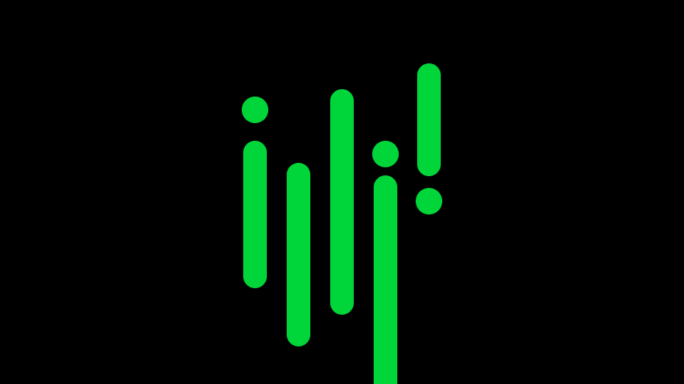Coronavirus financial support timeline: How you can apply and when the schemes end
Learn when the coronavirus financial support schemes end so you can submit your applications in time and get the help your business needs.

The majority of coronavirus relief measures put in place by the government across 2020 and 2021 are beginning to wind down.
Some will continue to impact even into the coming decade, such as loan repayments.
But key offerings, such as the Coronavirus Job Retention Scheme (CJRS) and the Self-Employment Income Support Scheme, have now closed.
So, what’s left and is it necessary for your business to take any further action?
To answer that, in this article we’ve update our support timeline. We will revisit the blog in future if and when new or further coronavirus relief measures are announced.
Coronavirus relief scheme end dates – at a glance
- Self-Employment Income Support Scheme (SEISS): Applications for the fifth and final grant had to be made on or before 30 September 2021.
- Coronavirus Job Retention Scheme (CJRS): The final CJRS grant covered payrolls up to 30 September 2021. This was the final date for which employees could be furloughed. The final claim date for this payroll is 14 October 2021.
- Coronavirus loan schemes: You can apply for the Recovery Loan Scheme until 31 December 2021.
- VAT reduced rate for hospitality and tourism: 1 April 2022 is when the full VAT rate must resume; 1 October 2021 was when use of the 12.5% rate began.
- VAT Deferral New Payment Scheme: 31 March 2022 is potentially the final payment date, although it was possible to contact HMRC by 21 June 2021 to arrange a payment plan.
- Enhanced Time to Pay for Self Assessment taxpayers: January 2022 is the final payment date.
- Pay As You Grow: Repayments are likely to be made by some as late as November/December 2030.
- Tax relief for home working expenses: No end date has been mentioned.
Coronavirus relief scheme end dates – in depth
Below, you can find more details on the schemes and their end dates:
Self-Employment Income Support Scheme (SEISS)
Coronavirus Job Retention Scheme (CJRS)
VAT reduced rate for hospitality and tourism
VAT Deferral New Payment Scheme
Enhanced Time to Pay for Self Assessment taxpayers
Tax relief for home working expenses
Self-Employment Income Support Scheme (SEISS)
This scheme has ended. The final claim date was 30 September 2021.
The original Self-Employment Income Support Scheme (SEISS) ran until the end of October 2020, at which time it had offered two grants. It then was extended several times, and a third, fourth and then final fifth grant were announced. The last of these covered the period 1 May 2021 to 30 September 2021.
The SEISS allowed those who are self-employed and who use the Self Assessment income tax system to claim grants.
It was intended to augment earnings, meaning you could continue to work and still claim.
End date
Claims for the fifth and final grant opened at the end of July 2021 and claims needed to be submitted by 30 September 2021.
What you need to know or do
The government’s SEISS website contains details of how the scheme operated and what it offered. But as mentioned earlier, it’s no longer possible to claim.
If you claimed for the SEISS grant but found your workload has “not been impacted by reduced activity, capacity or demand or inability to trade in the relevant periods”, you should repay the SEISS grant to HMRC within 90 days of receiving it.
Don’t forget that HMRC has intimate knowledge not just of your business finances but of the entire UK workforce. It knows how much you typically earn, as well as how somebody else performing your job is likely to earn.
Another thing to remember is that the SEISS grant should be declared on your annual Self Assessment tax returns, along with any other income you received from your trade.
Coronavirus Job Retention Scheme (CJRS)
This scheme has now closed.
One of the earliest coronavirus relief measures for business, the Coronavirus Job Retention Scheme (CJRS) was extended several times but ended on 30 September 2021.
The scheme allowed businesses to furlough staff in response to lower demand while being able to claim back a percentage of their usual salary for the furloughed hours/days.
Here’s what could be claimed for September 2021:
- September 2021: You could claim up to 60% up of a salary, to a cap of £1,875 for furloughed hours and needed to contribute the remaining 20% yourself to take it up to the required 80% (up to a maximum of £625). You needed to make employer National Insurance contributions and minimum mandatory pension contributions.
End date
The final CJRS grant covered payrolls up to 30 September 2021. This was the final date for which employees could be furloughed.
The final claim date for this payroll is 14 October 2021.
What you need to know or do
Submit your final claim for September 2021 on or before 14 October 2021. Note that any adjustments should be made on or before 28 October 2021. If you miss this date for adjustments, you might incur a penalty from HMRC.
Coronavirus and your business
We’ve gathered information and resources to help navigate this situation, including tools and webinars, to help you understand what financial support is available.

Coronavirus loan schemes
As part of the coronavirus relief offerings, the government created several loan schemes to provide guaranteed loans at attractive interest rates.
These have now been closed, in favour of a single loan scheme called the Recovery Loan Scheme. This remains open until the end of 2021.
It lets businesses apply for loans from commercial lenders that are once again 80% guaranteed by the government.
Loans are available for amounts between £25,001 and £10m for term loans and overdrafts, and between £1,000 and £10m for invoice finance and asset finance.
The loans are open to almost every business type except banks, building societies, insurers, and reinsurers (excluding insurance brokers, which can apply).
End date
Loan applications close on 31 December 2021.
What you need to know or do
To apply for a loan, start by visiting the British Business Bank website to learn more about the scheme and determine which lenders are accredited as part of it.
If your usual bank isn’t on the list, you can still approach the other lenders.
Note that lenders only have a certain amount of government-guaranteed cash that they’re lending as part of the loan scheme, so it’s often necessary to shop around to find a deal.
VAT reduced rate for hospitality and tourism
As part of the initial coronavirus relief measures, the government reduced the VAT rate classification for certain goods and services within the hospitality and tourism industry.
This meant businesses could apply a reduced rate of VAT to supplies of food and non-alcoholic drinks consumed on their premises, or hot takeaway food/non-alcoholic drink, and to holiday accommodation.
In the 2021 Budget, delivered in March 2021, the government once again extended this measure.
The various VAT rates and when they can be applied are as follows:
- 5%: 15 July 2020 to 30 September 2021
- 5%: 1 October 2021 to 31 March 2022
- Standard rates: 1 April 2022 onwards.
End date
1 April 2022 is the date when the standard rates of VAT should be applied. Until then, the reduced rates can be used.
For flat rate VAT users, the rates are also discounted, as we discuss in our article looking at coronavirus measures in the 2021 Budget.
What you need to know or do
If your business is eligible, you’ll most likely already be applying the reduced VAT rate.
You should have switched to the 12.5% rate as of 1 October 2021, which might have involved updating menus or signage to reflect increased pricing, adjusting receipt printing/invoicing systems, and making changes in your accounting.
And then, subsequently, you should prepare for resumption of the full VAT rate in April 2022.
If in doubt about how the temporary VAT rates should be applied in your accounting software, speak to your accountant, tax expert or software vendor via its support helpline well ahead of time.
VAT Deferral New Payment Scheme
This scheme is now closed.
As part of the initial coronavirus relief measures, the government allowed VAT-registered businesses to defer their VAT due for the March to June 2020 period, interest-free.
The payment could be delayed until March 2021 but in the Winter Economy Plan of late 2020, the chancellor announced this payment could be spread across the 2021/22 fiscal year as a series of interest-free payments. However, this had to be approved by HMRC.
End date
You had to have either paid in full by 31 March 2021, or you should’ve contacted HMRC by 21 June 2021 to discuss paying smaller interest-free payments.
What you need to know or do
If you failed to pay in full or make an arrangement with HMRC for extra help to pay by 30 June 2021, you may be liable for a 5% penalty or interest.
If you’re unsure on this, check with HMRC for more details.
Enhanced Time to Pay for Self Assessment taxpayers
This scheme has now closed.
Previously, the government allowed people who use Self Assessment to defer any payment due in July 2020 until January 2021.
However, it was then possible to pay this bill, plus January 2021’s tax bill, across 12 months using HMRC’s existing Time To Pay facility.
End date
January 2022 is when the final payment will be made, but you needed to have applied before January 2021.
What you need to know or do
Unfortunately, it’s too late to apply to use this scheme. But it’s worth once gain mentioning that the Time to Pay scheme is always available as an option if you have trouble paying your tax – albeit at the discretion of HMRC.
Contact HMRC’s Self Assessment Payment Problems helpline and request a Time To Pay plan.
Pay As You Grow
The government announced the Bounce Back Loan Scheme (BBLS) as part of its initial coronavirus relief measures.
In addition to the extension for applications mentioned above, the government announced it would let businesses switch to interest-only payments for periods of up to six months.
Perhaps more importantly, it also said it was extending its backing of loans for up to 10 years, meaning businesses can choose to repay the loan over that period.
End date
As late as November/December 2030, if you were granted a loan on the application deadline.
What you need to know or do
If you have a Bounce Back Loan, your lender will already have communicated this to you but, if not, enquire with it.
Note that the use of Pay As You Grow will not affect your business’ credit rating.
Tax relief for home working expenses
Those who were forced to work from home because of coronavirus can claim tax relief for additional household costs.
Claims such as this have always been possible for home workers, even before the coronavirus outbreak.
In normal years, the tax relief could only be claimed if your employer required you to work from home – if your contract of employment stated that you were home-based, for example.
However, due to the move by many businesses to offer home working following the coronavirus outbreak, this relief can be used by those who work from home.
In addition, HMRC has made a concession that taxpayers can claim a full year’s relief (52 weeks) even if they were only required to work from home for as little as one day.
In normal years, relief can only be claimed for the actual number of whole weeks worked at home.
Employees who are working from home can claim the actual costs for the dedicated space they use for their work.
Calculating this can be complex.
To simplify the claim process, HMRC has published a working from home value, which it permits workers to use as the costs for working from home without needing to do any calculations or provide evidence of actual costs.
The allowance that can be claimed without further evidence was raised to £6 per week from 6 April 2020, compared to £4 a week in previous years.
If you decide to claim for actual costs, you can claim for the likes of additional costs in your utility bills, household insurance, and phone calls necessitated by home working.
Unfortunately, you can’t claim for things you would be paying in any event, such as mortgage/rent, or for your broadband connection.
Additionally, if you’ve bought equipment specifically to facilitate home working then you may be able to claim them as business expenses in the usual way on your Self Assessment tax return.
You can claim for the home working tax relief in two ways:
- Using a flat rate of £6 a week from 6 April 2020, which is calculated based on your rate of tax. For example, if you’re a basic rate taxpayer, you can claim 20% of this – £1.20 per week. Claiming this way means you don’t need to provide evidence of the extra costs.
- For the exact amount of extra costs. But you’ll need to keep the paperwork and submit a Self Assessment claim (such as receipts, bills or contracts).
End date
Sage has enquired with HMRC if there is an end date for the extension of the flat-rate scheme to cover flexible home-working following the coronavirus outbreak. We’ll update this blog with the answer.
What you need to know or do
You can claim the relief using your Self Assessment tax return.
If you don’t complete a Self Assessment form – for example, you’re employed full time via PAYE – you can still claim via the government’s website, which launched on 1 October 2020.
This will adjust your tax code, meaning you receive the relief as a reduction in the tax you pay each via PAYE each month.
Conclusion on coronavirus support
Coronavirus relief measures are now largely winding down but some, such as the loan scheme, remain available to the end of 2021.
Businesses should think about the benefits and also any issues about using available offerings at this late stage.
With other measures, such as the CJRS and SEISS, it’s advisable to check your existing claims to ensure they’re valid. It’s worth remembering that the schemes are intended only to supplement existing income that was diminished because of coronavirus, rather than to generate additional income.
Editor’s note: This article was first published on 2 December 2020 and has been updated for relevance.
7 ways to take control of your business
Want to know how you can boss it at your business? Read this guide for top tips to help you master your business admin and truly take control.






